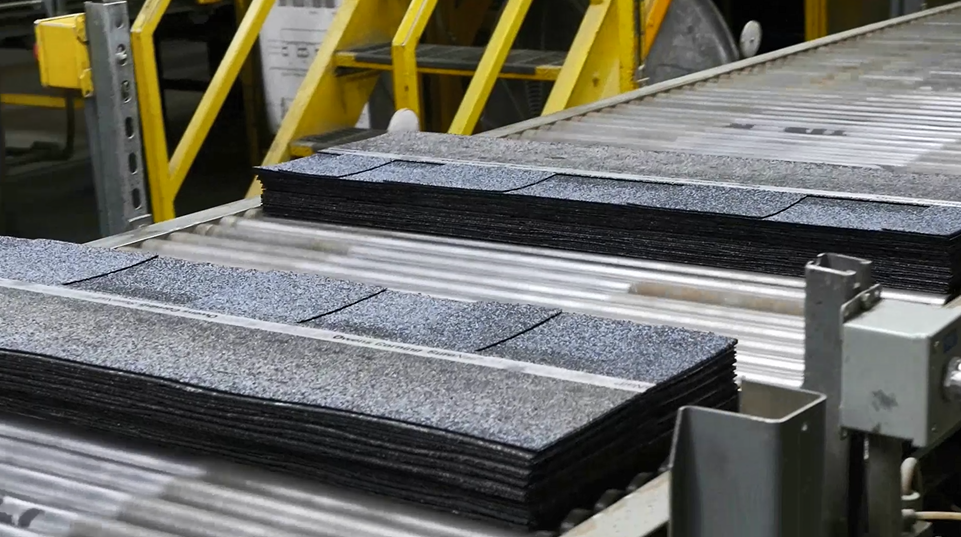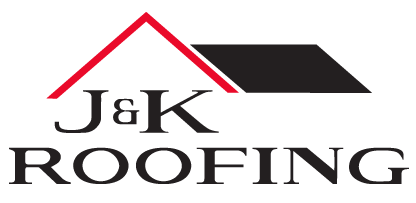
How Shingles Are Made and Material Information
Asphalt shingles are by far the most common roofing material in Colorado and across the country. And that’s for good reason: they’re affordable, durable, and they go with just about any style of home out there.
But what makes this popular roofing material so effective? Let’s take a closer look at how shingles are made, what they’re made from, and how long you can expect them to last when properly maintained.
What Asphalt Shingles Are Made of
To understand how shingles are made, you should first get an idea of what materials are used to create asphalt shingles.
Asphalt shingles have been around for a very long time, and thankfully the technology for making them has greatly improved. These days, many popular shingle manufacturers like GAF and Owens Corning use fiberglass as the base material. Some shingles, like Malarkey shingles, are made of rubberized asphalt and upcycled rubber and plastics. Felt is also still an option, but it’s not as durable as fiberglass.
The durability of asphalt shingles is reinforced with additional layers of asphalt, weather- and fire-resistant coatings, a sealant, and the familiar stone granules that are applied at the end to help create a nice appearance.
How Asphalt Shingles Are Made
The shingles start out as a large sheet of base material — typically either felt, fiberglass, or rubber — that serves as a membrane. The membrane is then coated on both sides with asphalt, which builds durability and helps make the shingle weather-proof. Additional protective coatings are also applied to make the shingles weather- and fire-resistant.
From there, the top layer of the shingle is covered with small stone granules to add traction, help provide a color contrast of the shingles themselves, and provide protection against damaging UV rays. A thin layer of cellophane is attached to the back of the shingle to prevent them from sticking together when stacked together during the packaging process.
Finally, a layer of adhesive is applied in specific areas to create an extra “stickiness” that helps provide wind resistance so shingles stay in place during storms and strong winds. The shingles are then cut according to the selected style, and packaged for distribution.
How Long Asphalt Shingles Last
When properly maintained and cared for, asphalt shingles can last up to around 20 years. The lifespan of these shingles is largely dependent on conditions like climate, your geography, how well the shingles are maintained and repaired whenever needed, and the materials they’re made of. You should also have your roof inspected two times a year, in the spring and fall, and after significant storms.
Shingles come in different categories and classes. The amount of asphalt determines the quality and longevity of a shingle. As you move from 3-tab traditional, medium grade or architectural, and designer or premium grade shingles, the amount of asphalt and shingle lifespan increases. Impact resistant shingles go through rigorous testing and are rated from Class 1 through 4 on how well they handle the impact of hail.
In Colorado, the sun, hailstorms, and temperature swings provide a real beating on asphalt shingles. Considering roof shingles with a Class 3 or Class 4 rating can greatly reduce the risk of damage to your home during extreme weather events. Many insurance companies now offer a discount for home insurance claims with Class 4 shingles.
Can You Repair Damaged Asphalt Shingles?
Because they’re pliable and fairly easy to work with, asphalt shingles can be repaired in certain cases, but the type of repair or replacement depends on several factors including the age and condition of your roof.
Once you’ve identified where any leaks or damage has occurred, it’s important to assess the extent of any shingle damage, and the size of the area that is impacted. Minor issues like small cracks can usually be repaired, while extensive deterioration may require a roof replacement.
There are many DIY shingle repair articles out there, but many are not accurate. Look to your shingle manufacturer site for your specific roofing material, or contact a professional roofer that does repairs.
Your homeowners insurance may cover the cost to replace the entire roof even if it’s only partially damaged. This could be due to the level of hail hits on an area of your roof after a storm which can determine the future lifespan of your roof. Also, if the materials to fix your roof are unavailable, your insurance company may replace the entire roof to ensure that the materials match.
Another important item to remember is that homeowners insurance won’t cover damage caused by a lack of maintenance. Repairing your roof due to wear and tear, or lack of maintenance, isn’t covered by insurance.
Trust a Local Professional
Even though asphalt shingles are the most popular roofing material, you want to make sure you’ve hired the best contractor for the job. Trust an established, local roofing company that’s certified in working with asphalt shingles. Our team at J&K Roofing has the experience and professional knowledge needed to handle your roofing repair or replacement.
If you’re in the Denver Metro, Front Range, Colorado Springs, or Northern Colorado areas, send us a message by clicking here, or give us a call to talk about your roofing needs. 303-425-7531
